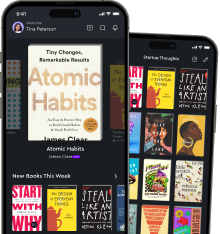Audio available in app
Models identify trends and behaviors from "summary" of Predictive Analytics by Eric Siegel
Predictive models are designed to identify patterns, trends, and behaviors within data. By analyzing historical data, these models can uncover insights that can be used to make predictions about future outcomes. This process involves identifying key variables that are likely to influence the outcome of interest and building a mathematical model that can accurately predict how these variables will interact. Models can be trained using a variety of techniques, including regression analysis, decision trees, and neural networks. Each of these methods has its own strengths and weaknesses, and the choice of technique will depend on the specific characteristics of the data being analyzed. Once a model has been trained, it can be used to make predictions about new data that it has not seen before. This process, known as scoring, involves applying the model to the new data and generating predictions based on the patterns that it has identified. These predictions can then be used to inform decision-making and guide future actions. One of the key benefits of predictive modeling is its ability to identify trends and behaviors that may not be immediately apparent from the data. By examining how different variables interact with each other, models can uncover hidden relationships that can provide valuable insights into the underlying processes that are driving the data. In summary, predictive models play a crucial role in identifying trends and behaviors within data. By analyzing historical data and building mathematical models, these tools can provide valuable insights that can be used to make predictions about future outcomes. Through the process of scoring, models can generate predictions that can inform decision-making and guide future actions.Similar Posts

The "traveling salesman" problem teaches us how to find the most efficient route
Imagine you're a salesman trying to visit a set of cities, each once and only once, on a single trip. How do you find the short...
Crossvalidation helps assess the model's generalization ability
Crossvalidation is a technique used to assess how well a machine learning model can generalize to new, unseen data. When you bu...
The journey towards achieving financial stability
The path to financial stability is not a straight line. It's a journey filled with twists and turns, ups and downs. Just like a...

The relationship between humans and machines is symbiotic
John Markoff explores the intricate dance between humans and machines, emphasizing a symbiotic relationship that is essential t...
Promote a culture of accountability and responsibility
Promoting a culture of accountability and responsibility is essential in fostering a mindset of continuous improvement and lear...
Hypothesis testing helps determine the significance of regression coefficients
Hypothesis testing is a fundamental tool in econometrics that allows us to determine the significance of regression coefficient...

Digital tools can revolutionize healthcare
Digital tools have the potential to completely transform the landscape of healthcare as we know it. By harnessing the power of ...
